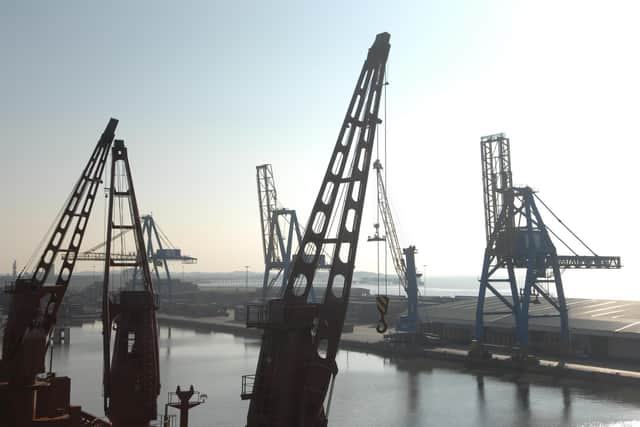Associated British Ports to invest £32m into Humber ports as part of huge upgrade of its cranes and equipment
As part of a wider group investment, a five-year strategy is being rolled out which involves purchasing new cranes, the full refurbishment of existing cranes and investing in landside equipment.
The plan has also assessed the eco-friendliness of any new plant and equipment as ABP endeavours to invest in environmentally friendly and sustainable equipment.
Advertisement
Hide AdAdvertisement
Hide AdThe ongoing strategy in the Humber has been split between investment in mobile harbour cranes and hydraulic cranes.


Simon Bird, Regional Director for the Humber ports said: “This significant investment shows the confidence we have to continue to grow and invest to ensure the Humber ports are future-proofed when it comes to the latest technology in cranes and cargo handling equipment.
“Our strategy is about ensuring we have a versatile mix of cranes to cargo mix and that we can provide additional capacity to meet growing volumes of cargo.
“As a port operator we remain resilient and give our customers what they need, and they want to know what we have is reliable and efficient.”
Advertisement
Hide AdAdvertisement
Hide AdThe first of the cranes to arrive is the Mantsinen 300M, the world’s largest hydraulic crane, which is due at the port of Immingham late April.
In their early years, the forerunners of today’s 300M were material handlers and have become popular with UK ports for their speed of operation.
These super-sized machines now have the reach and capacity to serve panamax size vessels and can handle as much as 1,500 tonnes per hour – far greater than the rope crane equivalents.
The machine weighs in at 365 tonnes (without attachment) and is diesel powered by an EU stage 5 Volvo 16-litre diesel engine. ABP has opted for an 18.5m curved boom and 14m stick and the machine has a wheeled undercarriage of six axles with four wheels per axle.
Advertisement
Hide AdAdvertisement
Hide AdThe Covid-19 pandemic delayed the rollout of the strategy, but now orders are being placed and equipment is arriving.
The first delivery in December 2021 consisted of four Konecranes Reach Stackers which run on hydrogenated vegetable oil (HVO) costing £1.6 million.
This will be followed by the Mantsinen 300m Hybrilift hydraulic crane plus various attachments costing nearly £3 million in spring.
A team from the Port of Immingham consisting of operations and engineers visited the Mantsinen factory in Finland last month to check on its build progress.
Advertisement
Hide AdAdvertisement
Hide AdIt also gave them an opportunity to test the new crane simulator and see how it handles.
The incoming plant and machinery will replace older infrastructure, while existing cranes will undergo a million-pound major refurbishment.
Those being refurbished include the Butterley cranes built in the 1990s for the width of the locks in the ports of Immingham and Hull.
It has not yet been decided what some of the future cranage and attachments will be, giving ABP time to engage with the port community and ensure cranes are fit for purpose. It will include mobile harbour cranes and material handlers, with some more Reach Stackers and forklifts being ordered.
Advertisement
Hide AdAdvertisement
Hide AdBulks, break bulks and project cargo are all being catered for, to ensure offloading and delivery are covered.
This includes a spend of £16m on maintenance capex on cargo handling landslide within Immingham Container Terminal (ICT) and Hull Container Terminal (HCT), and the stocking of spare parts as part of the port’s resilience.
An ABP spokesperson said that efficiency is a deciding factor, to ensure efficient cargo handling, and loading and unloading times are kept to a minimum.